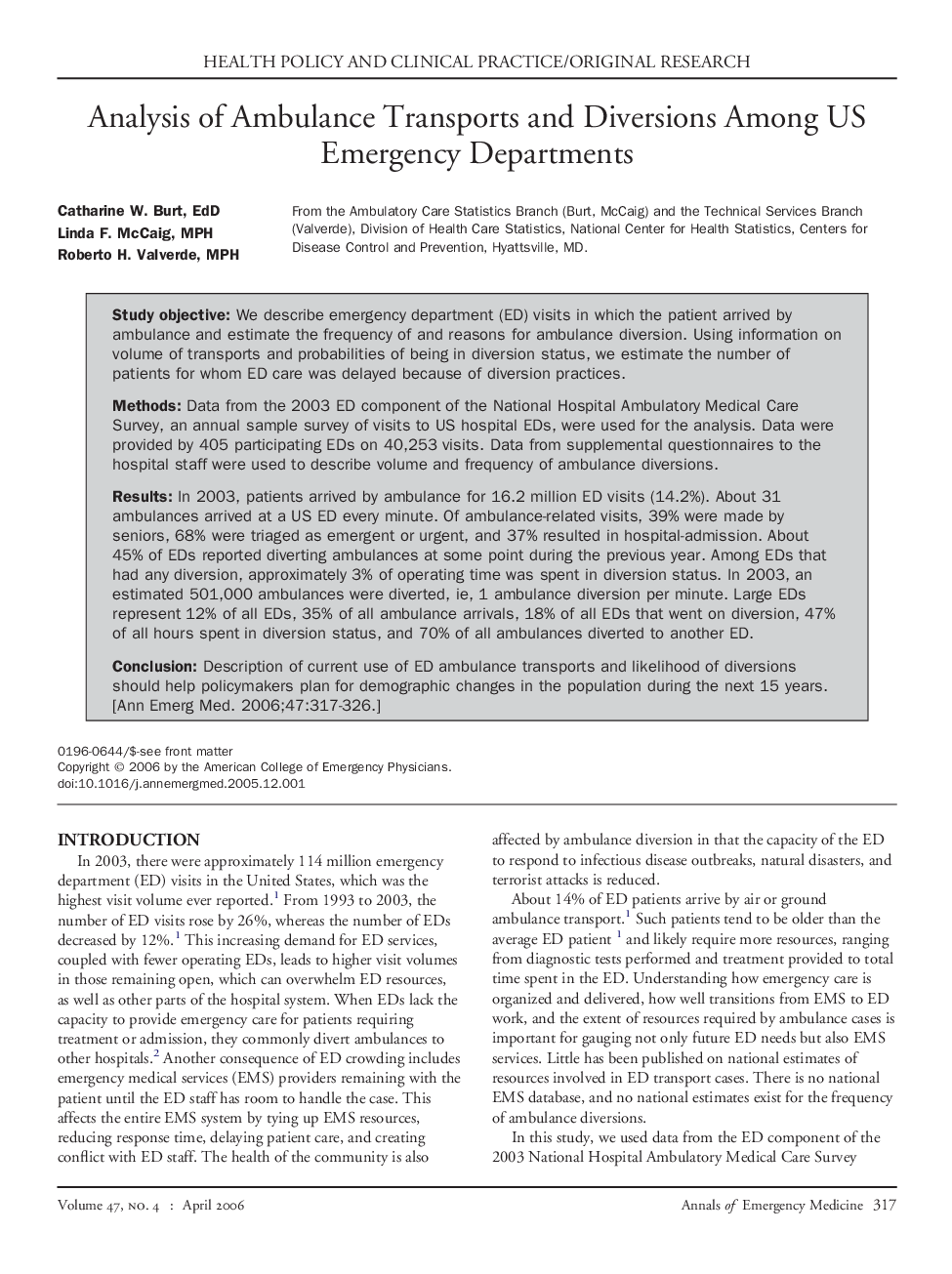| Article ID | Journal | Published Year | Pages | File Type |
|---|---|---|---|---|
| 3234598 | Annals of Emergency Medicine | 2006 | 10 Pages |
Study objectiveWe describe emergency department (ED) visits in which the patient arrived by ambulance and estimate the frequency of and reasons for ambulance diversion. Using information on volume of transports and probabilities of being in diversion status, we estimate the number of patients for whom ED care was delayed because of diversion practices.MethodsData from the 2003 ED component of the National Hospital Ambulatory Medical Care Survey, an annual sample survey of visits to US hospital EDs, were used for the analysis. Data were provided by 405 participating EDs on 40,253 visits. Data from supplemental questionnaires to the hospital staff were used to describe volume and frequency of ambulance diversions.ResultsIn 2003, patients arrived by ambulance for 16.2 million ED visits (14.2%). About 31 ambulances arrived at a US ED every minute. Of ambulance-related visits, 39% were made by seniors, 68% were triaged as emergent or urgent, and 37% resulted in hospital-admission. About 45% of EDs reported diverting ambulances at some point during the previous year. Among EDs that had any diversion, approximately 3% of operating time was spent in diversion status. In 2003, an estimated 501,000 ambulances were diverted, ie, 1 ambulance diversion per minute. Large EDs represent 12% of all EDs, 35% of all ambulance arrivals, 18% of all EDs that went on diversion, 47% of all hours spent in diversion status, and 70% of all ambulances diverted to another ED.ConclusionDescription of current use of ED ambulance transports and likelihood of diversions should help policymakers plan for demographic changes in the population during the next 15 years.
